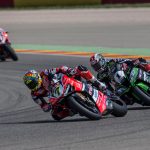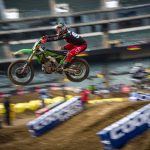Choosing the greatest ever motorcycle race victory is impossible. Riders have been competing on powered bikes for over a century – in numbers from two to thousands, in countries all around the world, and on surfaces from wood to tarmac via dirt to ice. Even attempting a short-list would be incendiary.
So let’s just agree that Kenny Roberts’ win on a Yamaha TZ750 at the 1975 Indianapolis Mile – 45 years ago this summer – was, if maybe not the greatest ever victory, then at least a unique and brilliant achievement. The man they call King Kenny regards beating Harley-Davidson’s factory flat-trackers on a four-cylinder two-stroke as the finest ride of his spectacular career.
And the bike on which he did it, if not in contention for any best racebike awards, has got to be one of the most outrageous and unlikely machines ever to take a chequered flag. As well as one of the most short-lived, given that the Yamaha was rarely raced again before being banned from dirt-track for good.
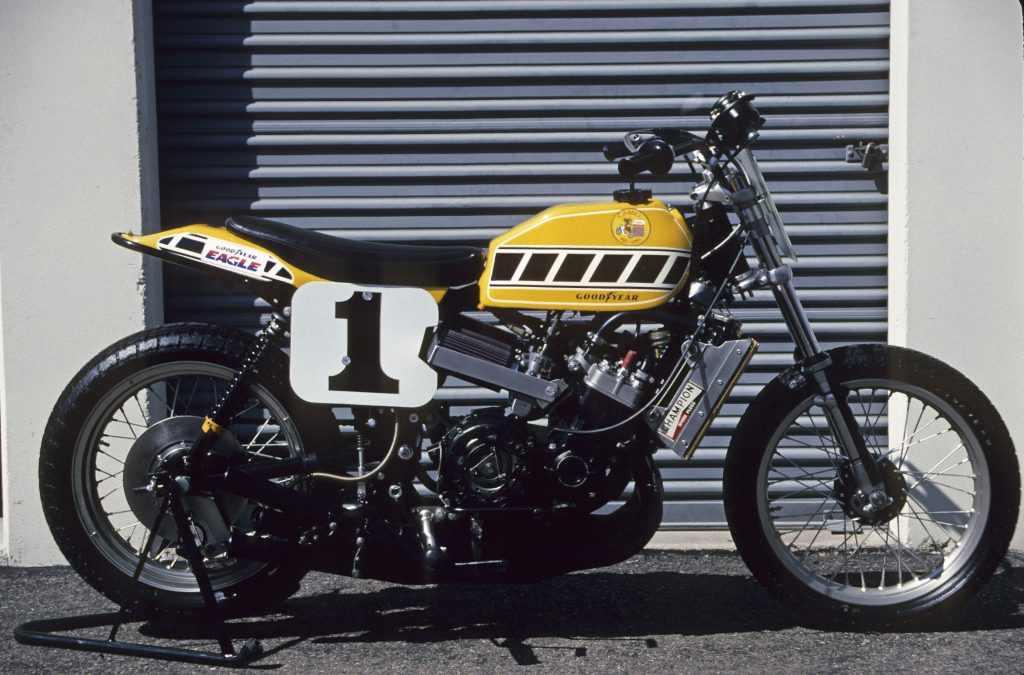
The TZ tracker was born out of desperation. In ’75, 23-year-old Ken Roberts was Yamaha’s ace rider and the reigning Grand National champion, but struggling to defend his crown. The TZ750 four was a weapon on tarmac but Yamaha’s ageing four-stroke parallel twin was outclassed by Harley’s XR750 on the dirt tracks that dominated the calendar.
The idea for the TZ tracker had come from Yamaha’s Canadian star Steve Baker and his mechanic Bob Work in 1974. Driving through California with a new TZ700 road-racer, they discussed the possibility of using its engine in a dirt-track chassis. So they called in on Doug Schwerma, boss of race-chassis firm Champion Frames, who built a frame using the same steel tubing and dimensions as his normal twin-cylinder chassis.
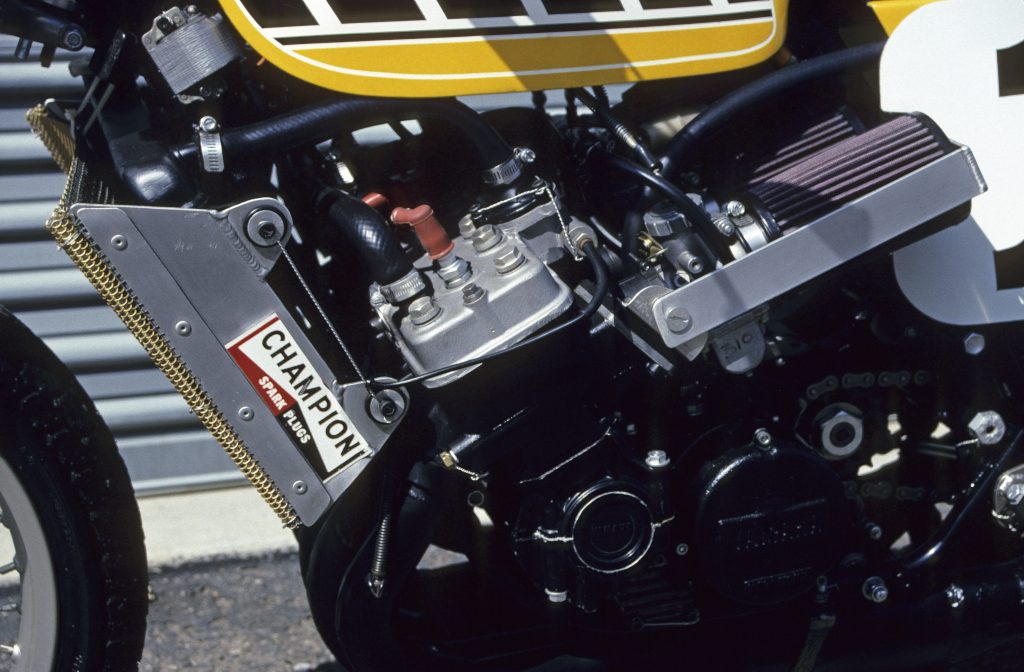
Champion-sponsored rider Rick Hocking debuted the bike in a half-mile race at Ascot Park, and was encouraged, although one engine bolt and the rear axle were bent by the motor’s power. Producing over 100bhp, the TZ was in a different league to Yamaha’s parallel-twin unit and Harley’s XR750 V-twins. The frame design was strengthened before five more were built: one each for Baker, Randy Cleek, Skip Aksland, Don Vesco (who never built his bike) and Roberts.
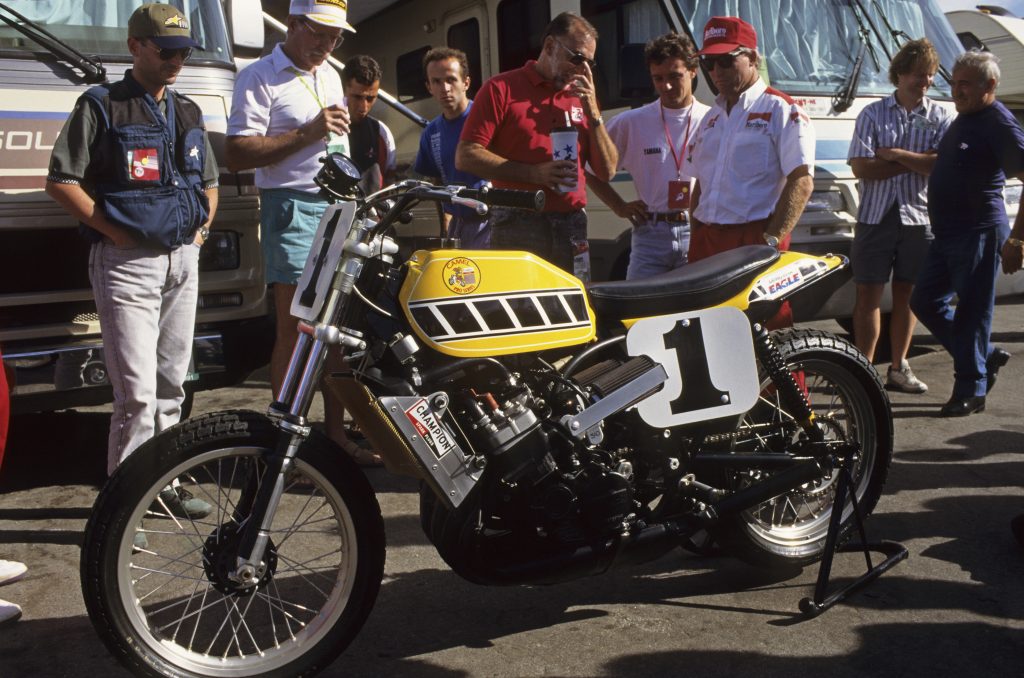
Roberts’ bike, built by his regular mechanic Kel Carruthers, was light, at around 145kg, and narrow despite its in-line engine and row of protruding air-filters. On the right of the wide, curved handlebar was a tacho, redlined at 10,500rpm. On the left bar was a button wired to kill one cylinder, so power could be moderated in the corners. The right bar had no lever – flat-track regs prohibited a front brake. The left footpeg was rearset; the right was set low and forward, to allow operation of the gearlever and rear brake.
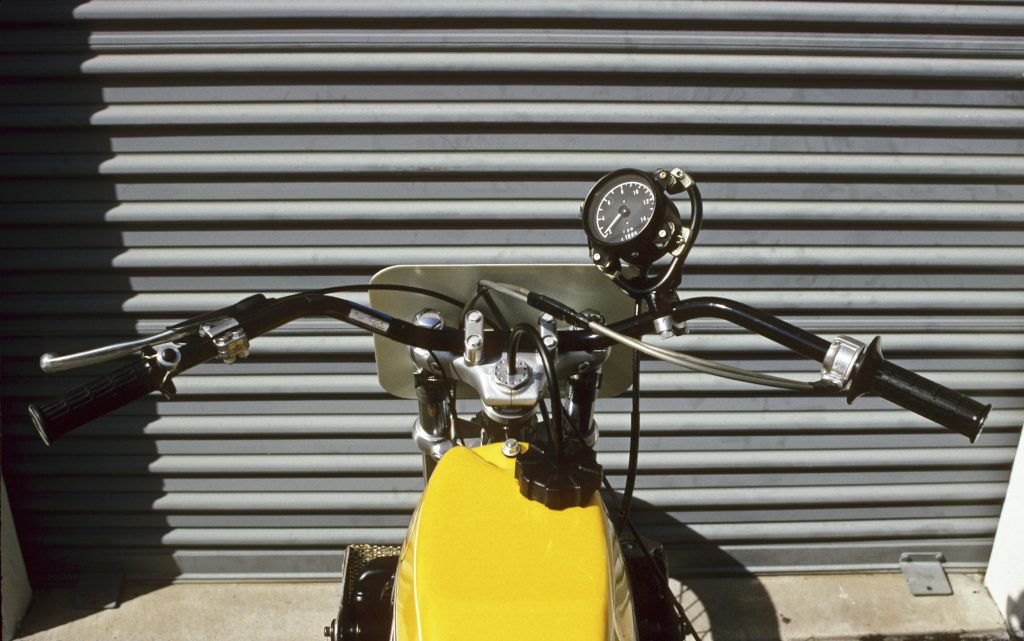
The TZ’s first mile race was at Indianapolis, where the motor’s tyre-spinning power was too much for Baker, Cleek, Hocking and Aksland, none of whom could get on the pace. Roberts had not seen the bike before practice – which, he later recalled, was exciting. “It became immediately clear that someone was gonna die riding such a bike, or cause someone else to die. I was at the top of my game in those days, but I really began to wonder what I’d gotten myself into.”
In his heat race Roberts found so little traction that he was last off the line and nearly failed to qualify, so started the main event on the back row. “It would spin anywhere above idle,” he said. “Lap times varied by two or three seconds a lap; it all depended on trying to get it to hook up.”
Harley’s Rex Beauchamp, Corky Keener and Jay Springsteen diced for the lead in the 25-lap main. Further down Roberts had taken to riding not on the compacted groove like all the others but out by the fence, his sliding rear tyre clipping the straw bales. Slowly it dawned on the crowd that he and the howling TZ were gaining ground.
Keener and Springsteen were dicing at the front but Roberts was coming fast, the Yamaha slithering and snaking beneath him. By the final lap he was upon them: somehow finding some traction high up on the cushion, winding-up that mighty engine out of the last turn, then blasting past the XRs to win by inches. “The place went nuts – totally insane,” he recalled. After two laps of celebratory wheelies he parked the TZ with the immortal words, “They don’t pay me enough to ride that thing.”
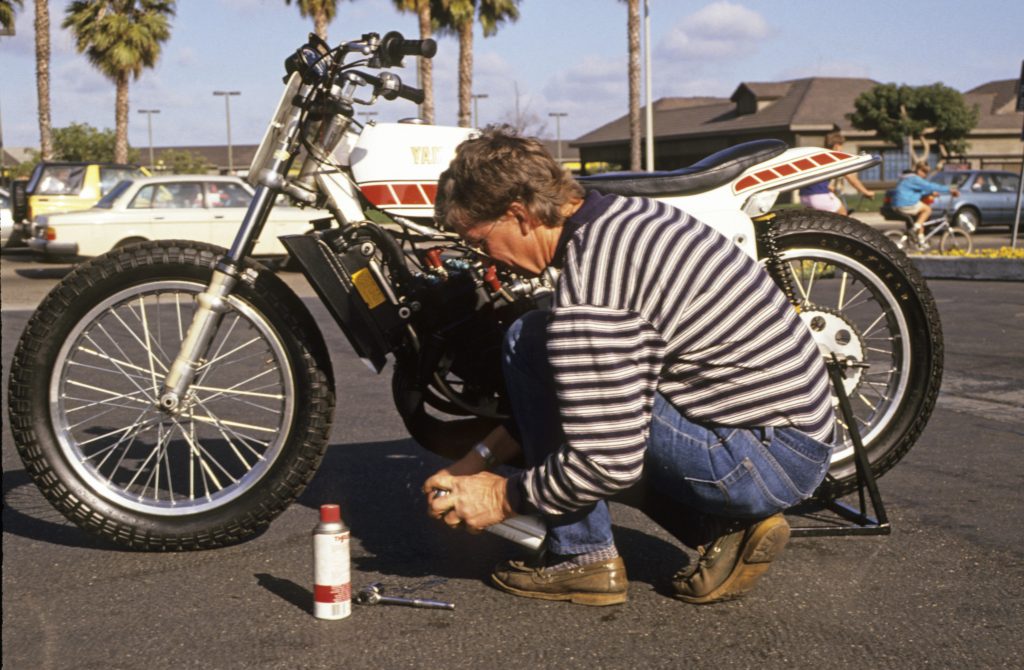
Even Roberts couldn’t make the TZ find enough grip to work in subsequent races at Syracuse and San José. Tyre problems at the latter meant a DNF, handing the title to Harley-riding Gary Scott. At the end of the season the AMA limited bikes to two cylinders. Roberts didn’t complain. The TZ750 tracker, he said, “was spectacular, for sure. But it was just too crazy… really, really dangerous… I’m just glad I lived to tell the story.”
And the story wasn’t quite over. In the Nineties, collector and author Stephen Wright acquired and restored first the ex-Baker TZ, then the ex-Roberts bike, which he showed to the impressed KR at Laguna Seca in 1994. And in 2009 Roberts, aged 57, was back on the bike at Indianapolis – power-sliding the stroker around the dirt-track course on a demo lap before an appreciative MotoGP weekend crowd including Valentino Rossi and Colin Edwards.
Yamaha’s YouTube video is well worth a watch. Greatest ever race win or not, that Indy victory of 45 years ago will never be forgotten.
Words & photos by Roland Brown @rolandbrown1


